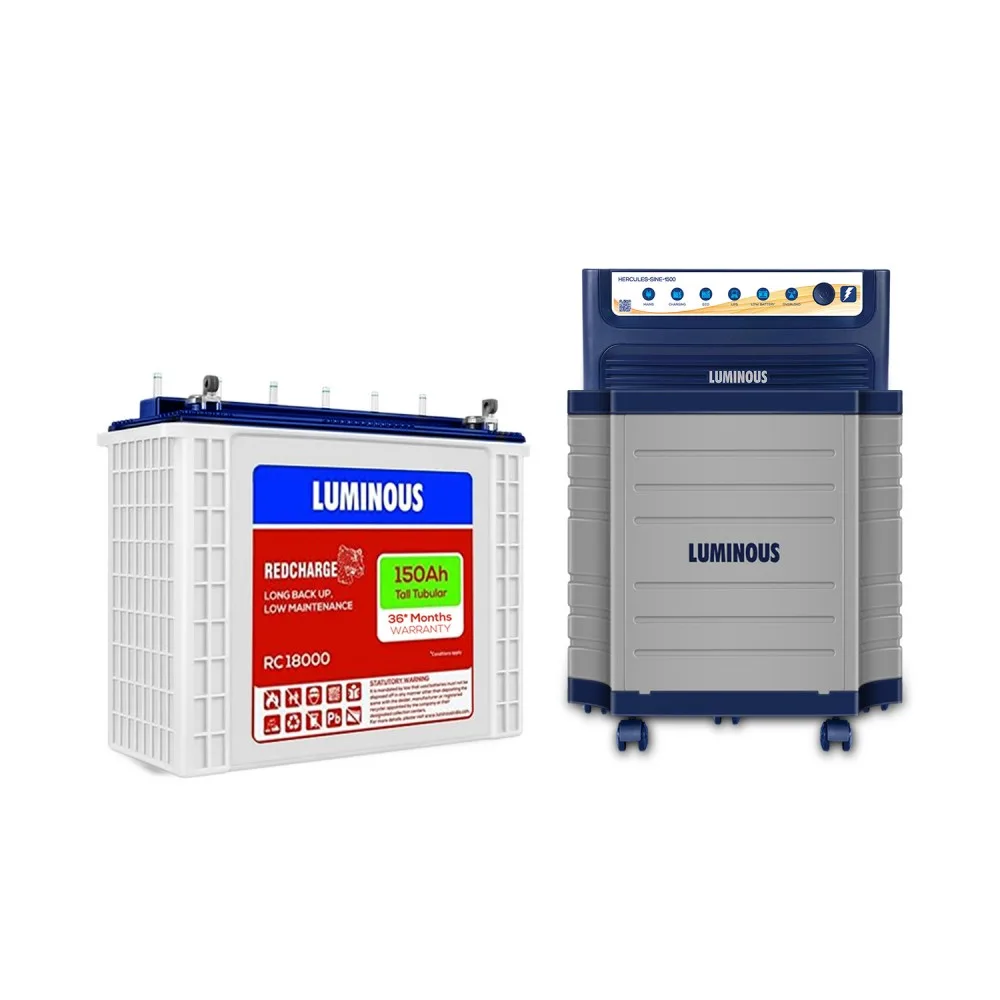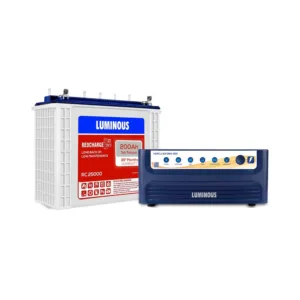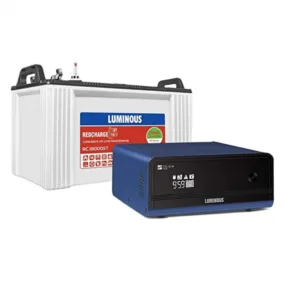Luminous Hercules Sine 1500 Inverter – Technical Specifications:
| Brand | Luminous |
| Model | Power Sine |
| Ratings in VA | 1400 VA |
| Ratings in Watts | 1176 Watts |
| Warranty | 24 Months |
| Waveform | Sine Wave |
| Battery Voltage | 12V |
Luminous RC18000 150AH Tall Tubular Battery – Technical Specifications:
| Brand | Luminous |
| Battery Capacity | 150AH |
| Volts | 12V |
| Warranty | 18 Months (Flat) + 18 Months (Pro-rata) |
| Battery Type | Tall Tubular Battery |
| Application/ Usage | Inverters, UPS |
| Maintenance | Low Maintenance |
Frequently Asked Questions (FAQs)
It provides power backup of 3 hours on half load (588 Watts). Lower usage of appliances during power cut will result in longer power backup time. Higher usage of appliances during power cut will result in shorter power backup time.
Schools, colleges are conducting the classes online and employees are working from home due to Covid-19. We need uninterrupted power supply for students to study and employees to work without disruption. Hence we need an inverter to provide power backup for home & office use.
Power inverters are affordable and commonly used for home use. Solar inverters are expensive and commonly used for commercial purpose. Sine wave inverters are the best inverters for home use as they are noiseless.
Batteries that are connected to an inverter for power backup are popularly known as inverter batteries. Tubular battery, Gel battery and Lithium ion batteries are best inverter batteries for home use as they do not emit hazardous fumes.
A battery capacity is measured in ‘AH’ (Amp hours). Inverter batteries are available from 60AH to 250AH. The customer should identify the duration of power cut experienced by them. High battery capacity provides longer backup during power cut.
Electrician charges for direct inverter wiring connection (not a recommended solution) is approx. INR 1000. Electrician charges for point to point inverter wiring connection (recommended solution) is approx. INR 3500.
We experience power cuts in India throughout the year. In summers, due to extreme heat, we experience power cuts due to transformer failure or grid failure. In monsoon, due to heavy rains, we experience power cuts due to cables getting snapped and sometimes power cut is intentional as a precautionary measure.
Related products
Inverter And Battery
Luminous Hercules Sine 1500 Inverter And Luminous RC25000 200AH Tall Tubular Battery
Inverter And Battery
Luminous Hercules Sine 1500 Inverter And Luminous RC25000 200AH Tall Tubular Battery And Trolley
Inverter And Battery
Luminous Optimus 2300 2000VA Inverter And 2 Units of Luminous RC18000ST 150AH Tubular Batteries
Inverter And Battery
Luminous Power Sine 1100 Inverter And Luminous SC18060 150AH Tall Tubular Battery
Inverter And Battery
Luminous Zelio 1100 Inverter And Luminous RC18000ST 150AH Tubular Battery
Inverter And Battery









